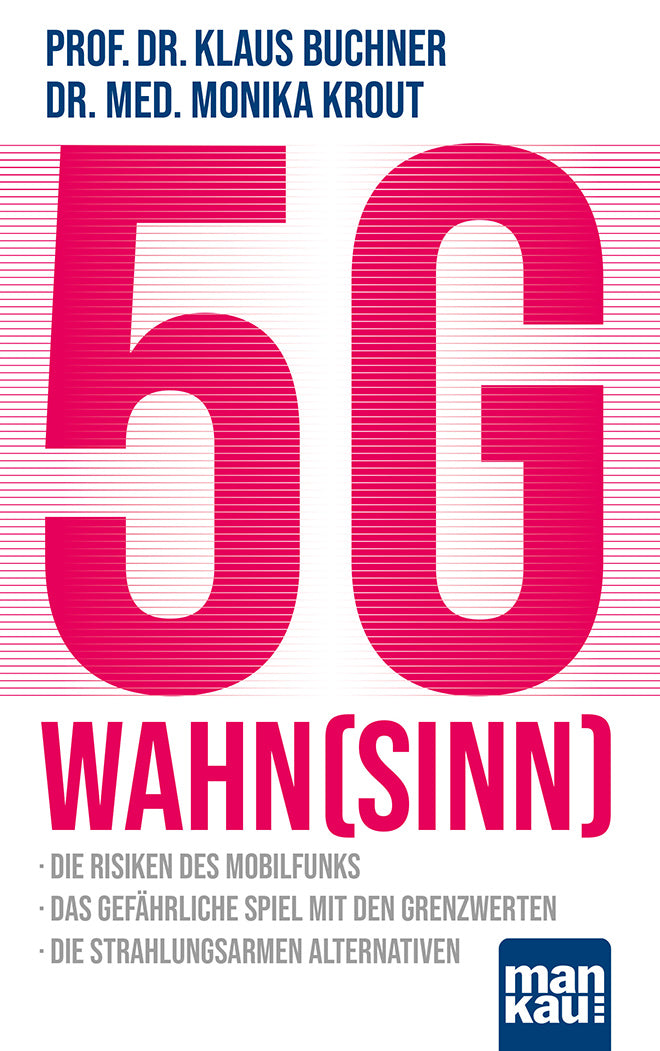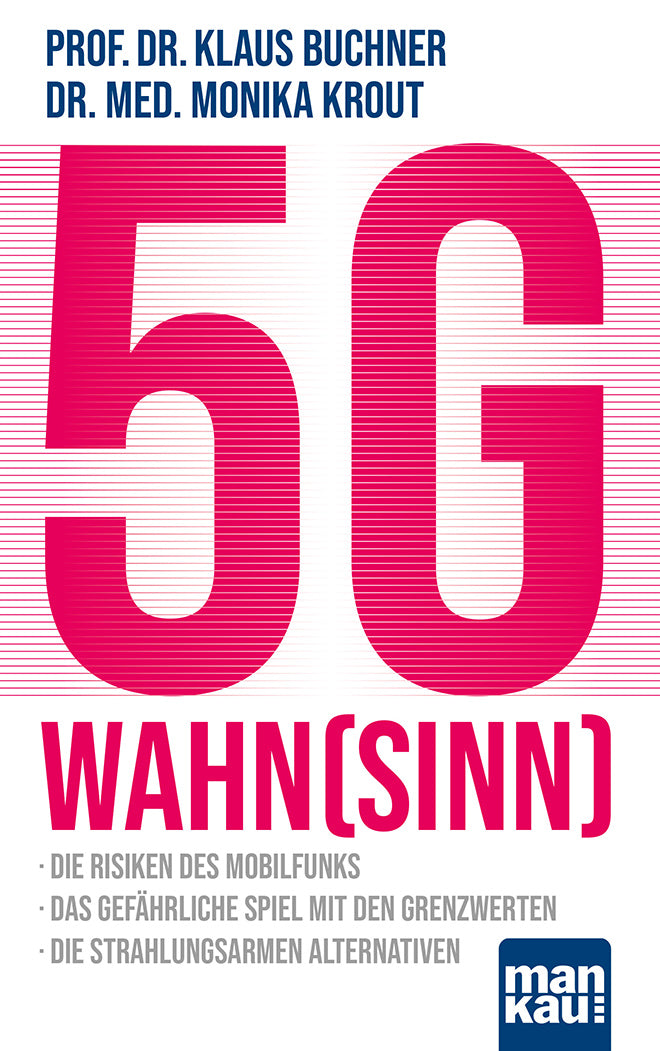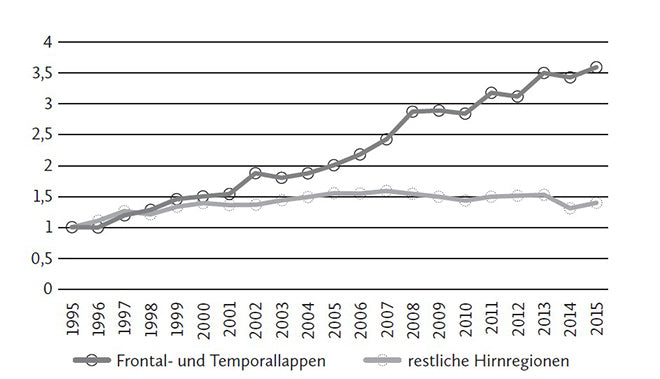
The underestimated danger of radiation: “5G madness” explains the risks and side effects of mobile communications
The underestimated danger of radiation: “5G madness” explains the risks and side effects of mobile communications
The book describes the effects of mobile phone radiation on people and nature in detail and in a way that is easy to understand. The authors of "5G Madness" are not enemies of technology and mobile telephony, but make no secret of the fact that radio radiation demonstrably damages the living environment and that the new 5G mobile phone generation could have catastrophic effects for all of us.
Serious analysis of the facts
"Harmful to health, brainwashing, greed, megalomania and gigantism" - this is how the television journalist and mobile communications critic Klaus Scheidsteger polemically sums up what 5G means to him. It is not just since the new mobile communications standard has become increasingly widespread that there have been controversial debates about the health risks of the new communication technologies for many years. The strong mobile phone radiation in our country is making more and more people ill; at least two percent of the German population are now considered to be electro-hypersensitive. But diseases and lasting damage are also becoming more and more common in animals and plants.
In his exciting, easy-to-understand and well-founded book, the respected physicist and former member of the European Parliament , Prof. Dr. Dr. habil. Klaus Buchner, provides information about the background and dangers of mobile communications, especially the new 5G standard. To do this, the former MEP, together with environmental physician Dr. med. Monika Krout, draws on serious studies and case studies that have rarely been reported on before. The authors also provide insights into how you can protect yourself and what humane alternatives to the current mobile network are possible.
Effects on people and nature
If a new transmitter is built somewhere, many people in the area do not experience any symptoms. But after just a few days, some people develop headaches, sleep disorders, memory and concentration problems, nosebleeds, etc. Soon, other effects can appear: exhaustion, skin rashes, tinnitus or unpleasant warming of the body without fever. It is difficult to determine how many people are affected by this because the symptoms are completely non-specific and can only be traced back to a specific cause with great difficulty.
The fact that these complaints are by no means only psychological - although this may be the case in a few cases - can be seen in the fact that animals and plants are also affected. Radio waves attack living structures in a number of different ways. The most important building blocks of plants, animals and humans are the (body) cells. They are enclosed by a cell membrane. Inside the cell there is an excess of negatively charged particles, while positively charged ones predominate outside. These are mainly sodium, potassium and calcium ions, which control muscle and nerve impulses, for example, and influence the biosynthesis of proteins and hormones. Numerous experiments have shown that radio waves can affect the electrical voltage ratio and change signal transmission.
Health hazards from radio waves
Radio waves cause a lack of energy in the cells in several ways. This begins with the fact that the red blood cells in the lungs are less able to absorb oxygen. A second effect is that their ability to transport oxygen is limited under the influence of radio waves. The immune system is initially stimulated by radio waves, but is inhibited in the long term. Although only a few experiments are known on this, the authors believe that it can even promote the spread of viruses and the development of inflammation.
However, radio waves also change heart rate variability, i.e. the natural variation in the time between two consecutive heartbeats. In general, this allows one to quickly adapt to new situations such as physical and mental stress. However, radio waves reduce this variability - the heartbeats are synchronized by radio signals.
It was clear from the first experiments with radio technology that it was not without danger. But it seems obvious how economic interests were placed above the protection of health from the very beginning. The book aims to encourage readers to form their own opinions and also shows ways in which alternative technical solutions could reduce radiation to a fraction.
Book tip:
Prof. Dr. Klaus Buchner / Dr. med. Monika Krout: 5G madness. The risks of mobile communications - The dangerous game with the limits - The low-radiation alternatives. Mankau Verlag, 1st edition May 2021, paperback 13.5 x 21.5 cm, 255 pages, 16.95 euros (D) / 17.50 euros (A), ISBN 978-3-86374-608-7
Recommended links:
More information about the book “5G Madness”
To the reading sample in PDF format
More about author Prof. Dr. Klaus Buchner
More about author Dr. med. Monika Krout
Our social networks − for questions, criticism, suggestions











